
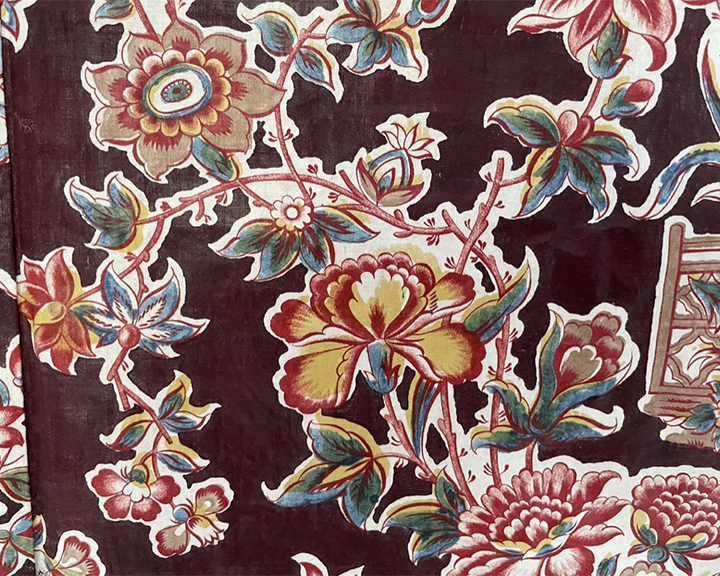
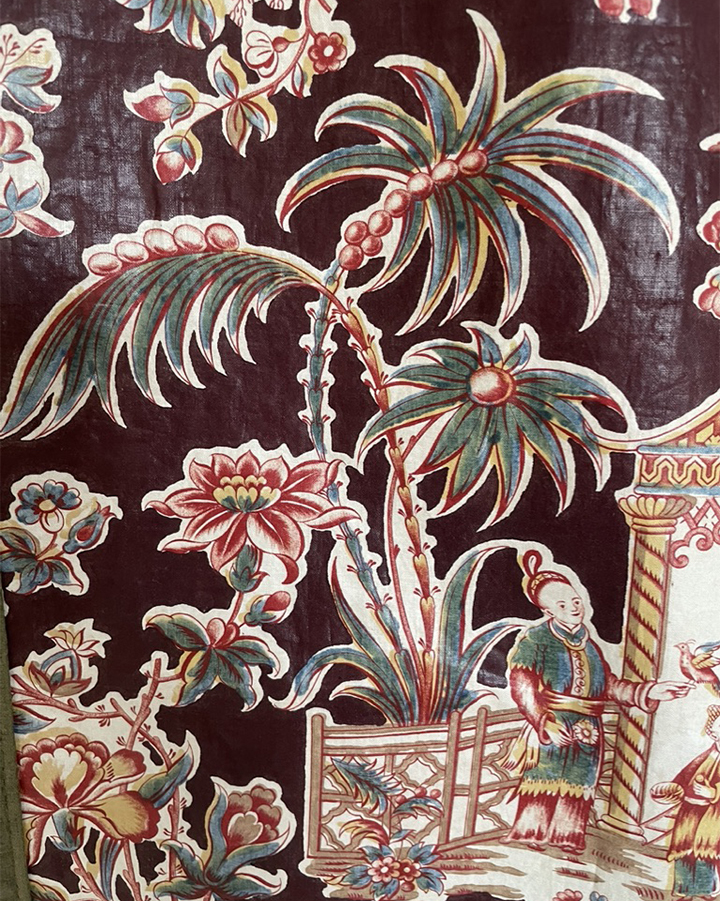

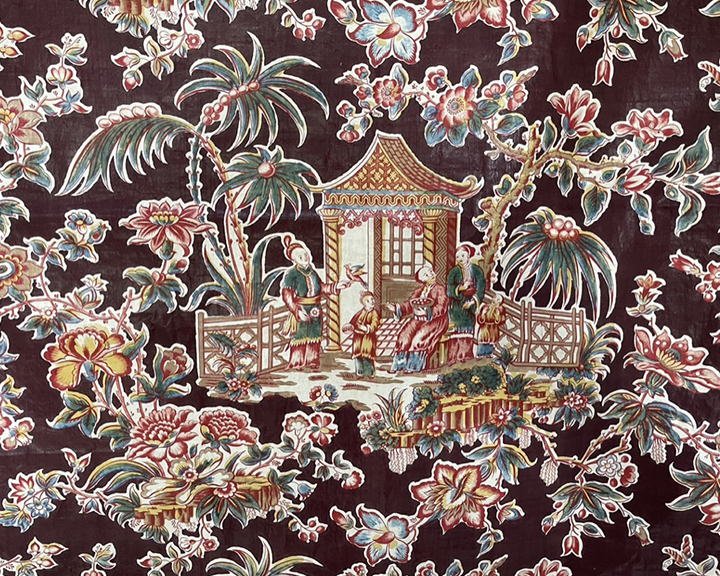
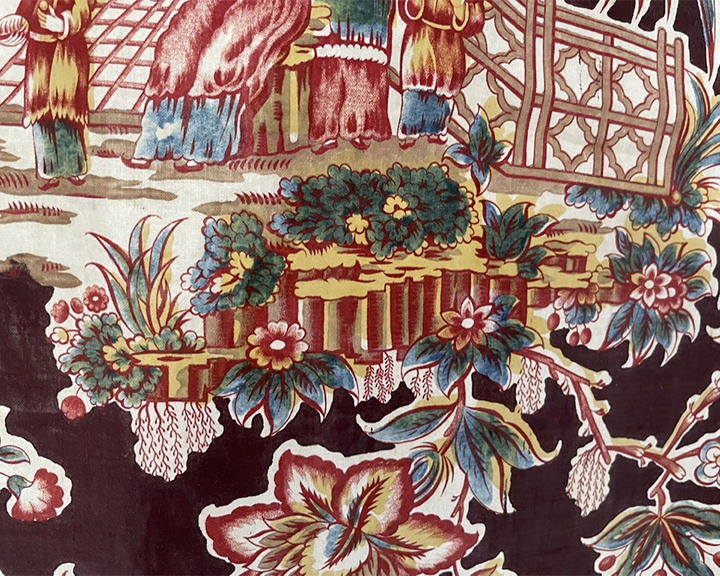
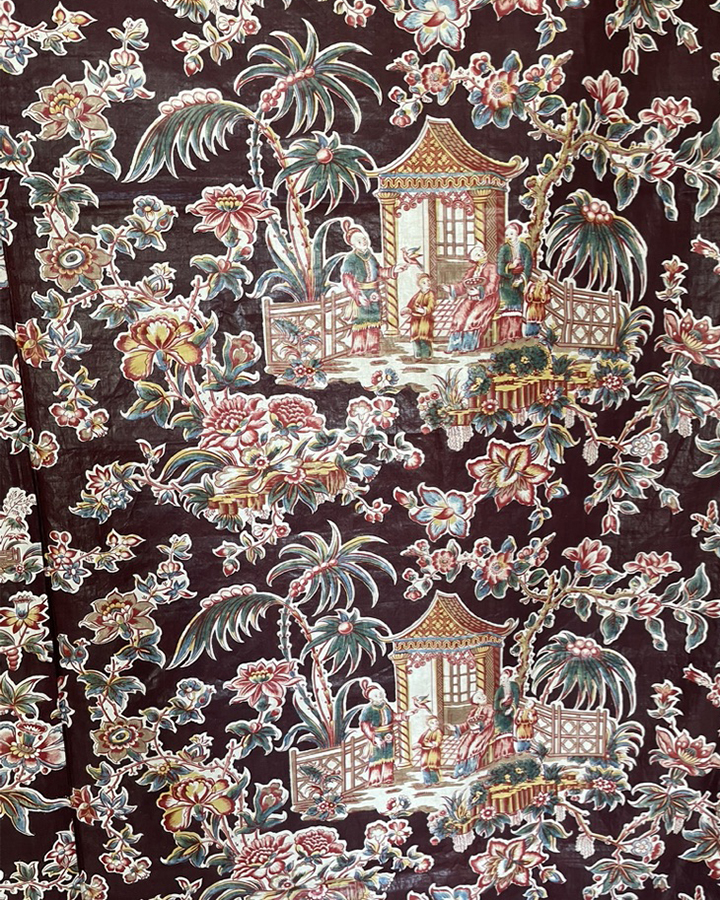
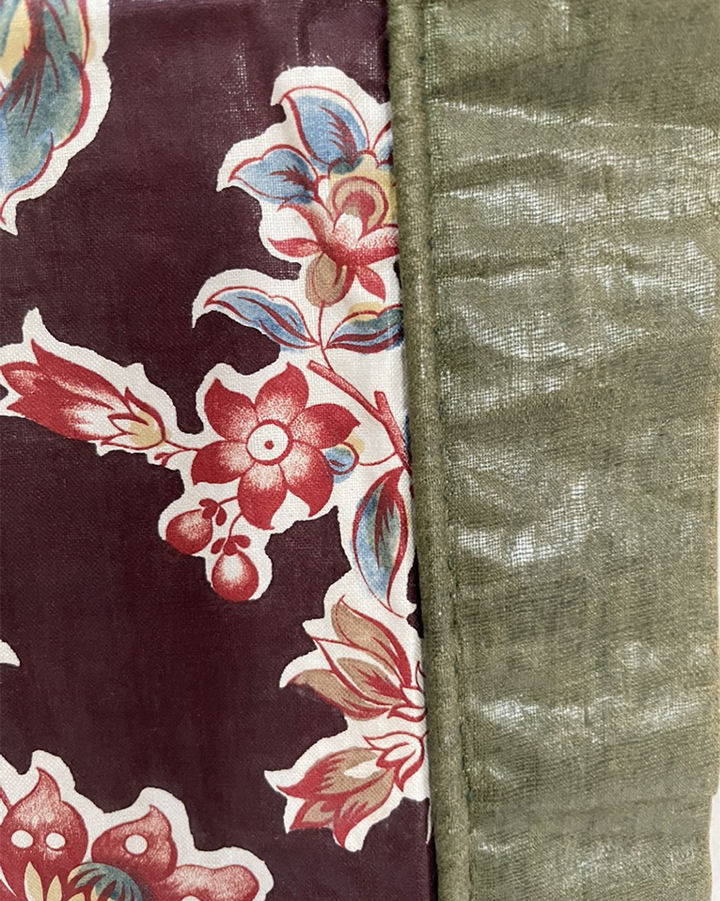
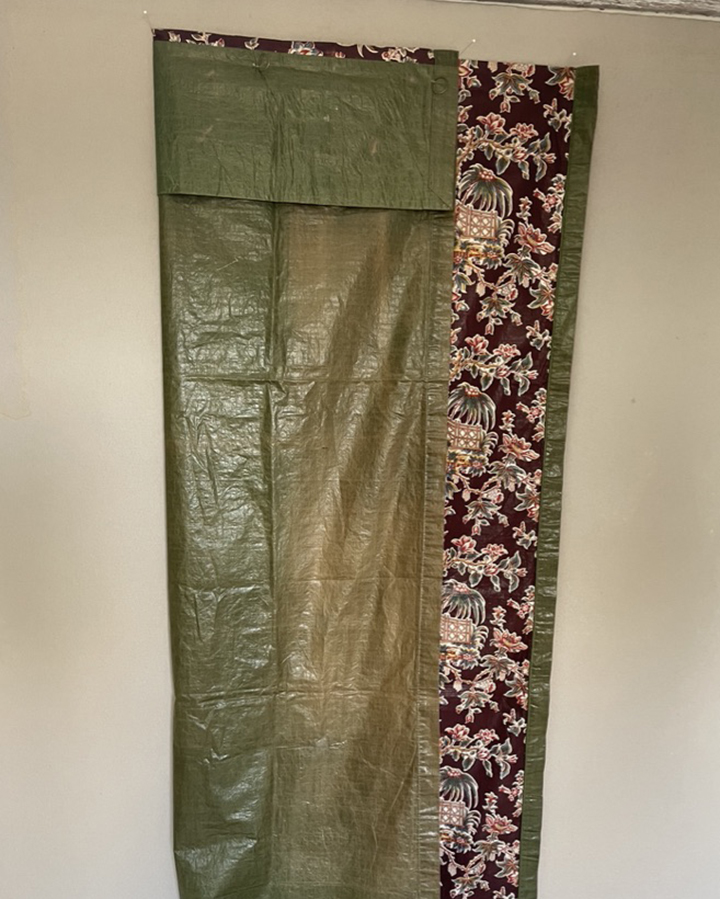
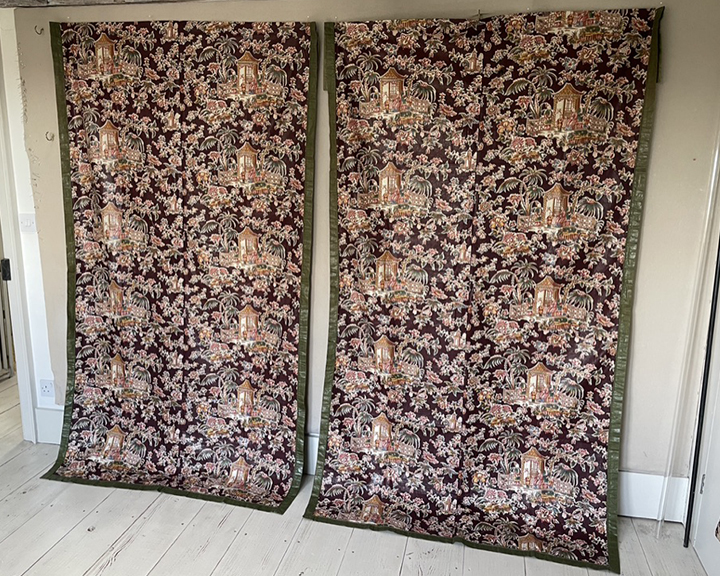
Bannister Hall was the leading printworks for wood-block furnishing chintzes, founded in 1798 in Higher Walton, Preston, Lancashire by Richard Jackson and John Stephenson. They completely transformed the calico printing industry increasing output, productivity, and ways of working.
Such designs might have been commissioned by London linen draper Richard Ovey (1790 to 1831) of Covent Garden the leading London merchant for 'furniture prints' who commissioned designers. Their designs were then sent to Lancashire or to Carlisle in Cumbria to be printed for London shops. These lengths were almost certainly designed by J.J. Pearman an Englishman who was active from1800-1825.
The pattern of this printed cotton has been created with an engraved metal roller, and additional colours built up with a woodblock, and then some hand painting. Engraved cylinder printing on textiles had been introduced in the 1783. The reason why I say that is because the red/pink/white shading on things like the man holding the bird’s sleeve is so gradual it could not be achieved using blocks. Also the repeat is very tight, that is the diameter of a roller.The dark ground here does not run right up to the figural and floral motifs leaving a white margin. This is often called a blotched ground and is the second phase of the use of dark grounds.
Each panel (two in each curtain) with a single repeat of a charming Chinese garden scene of a pavillion and fences with a man holding a bird beside two women holding bowls of fruits, accompanied by two children, all surrounded by exotic and colourful flowering and palm trees, using engraved rollers, hand blocks and hand painted (green) in shades of red, blue, green, yellow, all with white surrounds, on a dark brown glazed ground.
Each curtain made from two joined drops of fabric, each 22 1/2 in; 57 cm wide, edged and lined with mid green glazed cotton with piping.
Pattern repeat 13 1/2 in; 35 cm. 6 repeats in each length.
Each curtain a total of 6ft 11 in x 47 in; 2.1m x 1.2 m. A total of 8.40 m.
Excellent. Mint. There is one small hole near the top of one panel 1 in; 2.5 cm diameter. The green glazed lining is a little patchy in colouring, presumably from the light, but this does not detract from the wonder of these rare lengths. The motifs look appliqué with the white surrounds.
Printed Textiles. British & American Cottons and Linens 1700-1850 from Winterthur Museum by Linda Eaton p 246 for similar border designs.
Bannister Hall Archives pattern book, Cummersdale Design Collection.
Cleveland Museum of Art. clevelandart.org/art/1928.208
Museum of Fine Art, Boston: collections.mfa.org/objects/49630/piece-of-glazed-chintz-chinese-garden-pavilions-and-boats?ctx=4990e960-beb8-4c20-9907-a978be516896&idx=4. A chinoiserie print but not the same.
Metropolitan Museum of Art: metmuseum.org/art/collection/search?q=bannister+hall+&geolocation=England&era=A.D.+1800-1900&department=12 but nothing quite like our print.
Boston Museum of Art. collections.mfa.org/objects/49630/piece-of-glazed-chintz-chinese-garden-pavilions-and-boats?ctx=4990e960-beb8-4c20-9907-a978be516896&idx=4
Art Institue of Chicago: artic.edu/artworks/49033/fragment-furnishing-fabric. 1975.361
lancashiremuseumsstories.wordpress.com/2020/11/20/roller-printing/
barbarabrackman.blogspot.com
All images and text © meg-andrews.com 2021